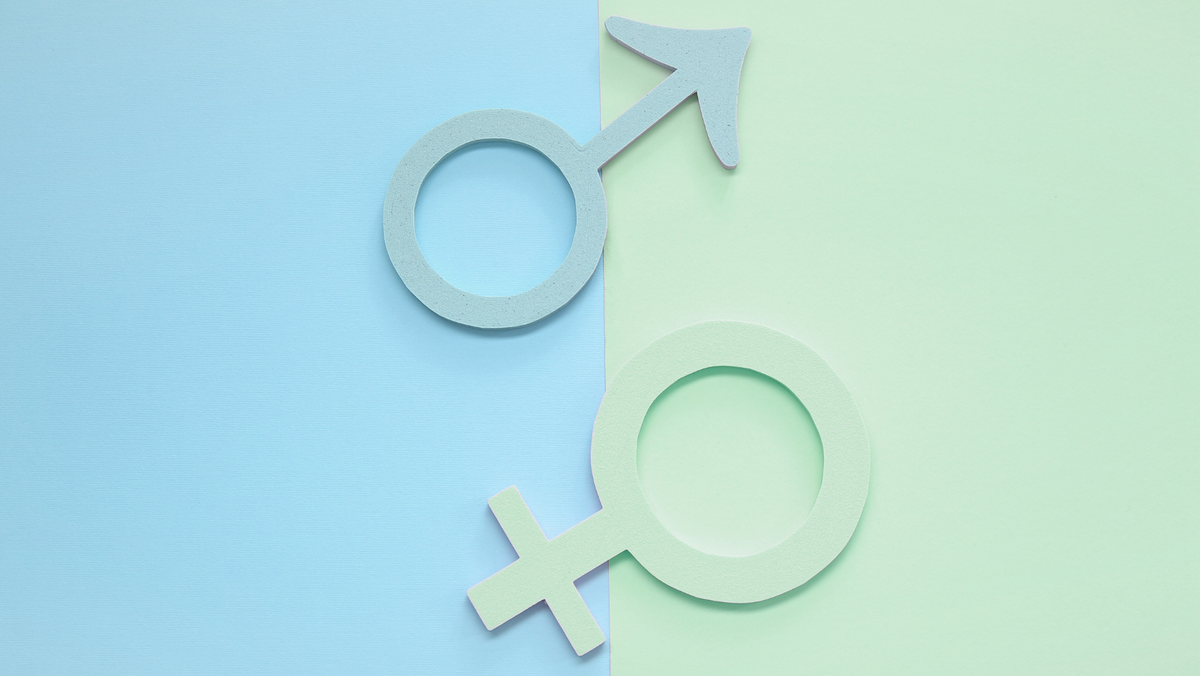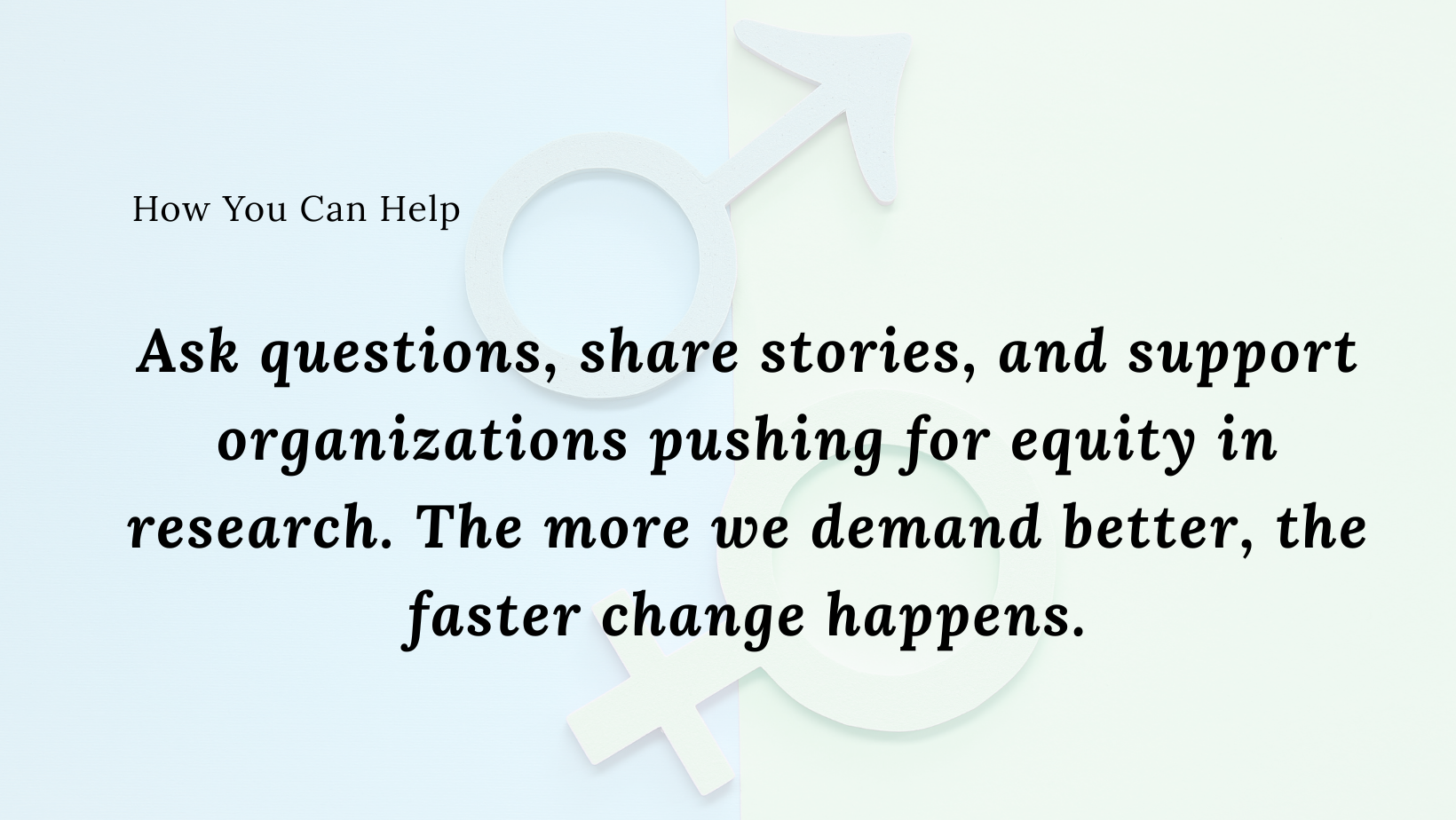The Gender Research Gap

Last week was Equal Research Day—and while it already feels like a lifetime ago that the conversation was trending, I didn’t want to let the moment pass without sharing a few thoughts.
Because yes, we’re still not where we could—or should—be when it comes to gender equity in medical research. But it’s also not all bad. We’ve made progress. And while it’s not happening fast enough, some progress is still progress. Working in women’s health, I get to witness that progress up close—through the research, the innovation, and the growing momentum to finally take women’s health seriously.
Still, let’s not forget: for decades, women, especially of reproductive age, were systematically excluded from clinical trials. Researchers argued that our hormones might “confuse the data.” The result? A persistent health gap that continues to affect everything from diagnosis accuracy to treatment safety.
That’s why I appreciate companies like Evvy, who created Equal Research Day to raise awareness and push for change. Because one thing is clear: without equal research, there can’t be equal care.
The Consequences of Leaving Women Out
The effects of excluding women from medical research are are not just historical, they're still showing up in care today.
Most medications and treatments were developed using male bodies as the default, yet women metabolize drugs differently, have different immune responses, and often show different symptoms. When care doesn’t reflect those differences, outcomes suffer.
Heart disease, the leading cause of death in women, was long studied almost exclusively in men. That’s one reason women are still more likely to be misdiagnosed or diagnosed later, especially when they present with symptoms that don’t fit the “male” pattern (but are actually typical for women).
And this isn’t just about heart health. A large-scale analysis of 770 diseases found that women are diagnosed an average of four years later than men, from cancer to diabetes. That’s four years of untreated symptoms and delayed care.
The same trend shows up in autoimmune conditions and chronic pain, where women are both more affected and more likely to be dismissed. There’s even a name for this phenomenon: the “gender pain gap.” And for conditions like endometriosis or PCOS, it can still take 7 to 10 years to get a diagnosis.
Where Are We Today?
You’d think that more than 30 years after women were mandated to be included in clinical research, we’d be further along. And yes, there’s been progress—but not nearly enough.
Women are still underrepresented in trials, especially for conditions that affect all genders. Even when included, the data often isn’t analyzed by sex, leaving critical differences unexplored. Female-specific conditions like endometriosis, PMDD, PCOS, or perimenopause remain severely underfunded and misunderstood. In many cases, we still don’t know the cause—let alone have accurate tests or effective treatments.
And then there’s the reality that most health data—whether from wearables, electronic health records, or insurance algorithms—isn’t designed to track female-specific metrics or hormonal fluctuations. That’s a missed opportunity, especially in an era where personalized health care is supposed to be the future.
But some are working to close that gap. Lera Health, for example, recently launched a large-scale study on fertility, aiming to better understand the real-life factors that affect conception. And Hello Inside together with Flo Living, is actively researching how glucose patterns change across the menstrual cycle—because understanding female biology shouldn’t be an afterthought, it should be the foundation.
But there’s reason for hope. We’re seeing real momentum: new treatments like inhalable oxytocin for postpartum hemorrhage, one of the leading causes of maternal mortality globally. There are also advances in personalized breast cancer therapies based on genetic profiles. There’s a growing shift to view women’s health beyond reproduction—encompassing autoimmune, metabolic, and mental health across the lifespan.
We’re not there yet. But we’re moving in the right direction.
What Needs to Change
To close the gender gap in healthcare, we don’t just need more data—we need better data. That starts with:
- Inclusive research design: Women must be represented in clinical trials from the start, not as an afterthought. And data must be analyzed by sex, not lumped together.
- Funding where it’s overdue: Conditions like endometriosis, PMDD, and perimenopause need serious investment. We can’t treat what we don’t study.
- A shift in mindset: Women’s health is not niche. It’s not just about reproduction. It’s cardiology, immunology, neurology—everything.
- More women in leadership: Research priorities change when the people setting them understand what’s at stake. Diverse voices at the table lead to better, more relevant science.
Real progress requires intention. And accountability. Without that, we’ll keep repeating the same blind spots.

Conclusion
Women’s bodies are not a medical mystery—they’ve just been ignored for too long. The research gap isn’t just a data problem; it’s a care problem. When women are left out of studies, they’re left behind in diagnosis, treatment, and outcomes.
But change is possible. And it starts with visibility, advocacy, and refusing to accept “normal” when it’s based on someone else’s biology. We deserve research that reflects our bodies, our experiences, and our health needs—at every stage of life.